Last week I thought it was time to take another stroll around the City churches to see what I would discover. After researching last week’s blog, I was particularly interested in artifacts that had been moved from one church to another and why.
I was very lucky in the first church I visited, St Martin within Ludgate, on Ludgate Hill (EC4M 7DE) inside which I found both a fascinating chandelier and a very unusual font. There is a large entrance lobby (designed to reduce traffic noise inside the church) and you then enter one of Sir Christopher Wren’s least altered interiors (1677-1686) with fine dark woodwork which largely escaped the Blitz.
Look up and you will see this beautiful chandelier or candelabrum …
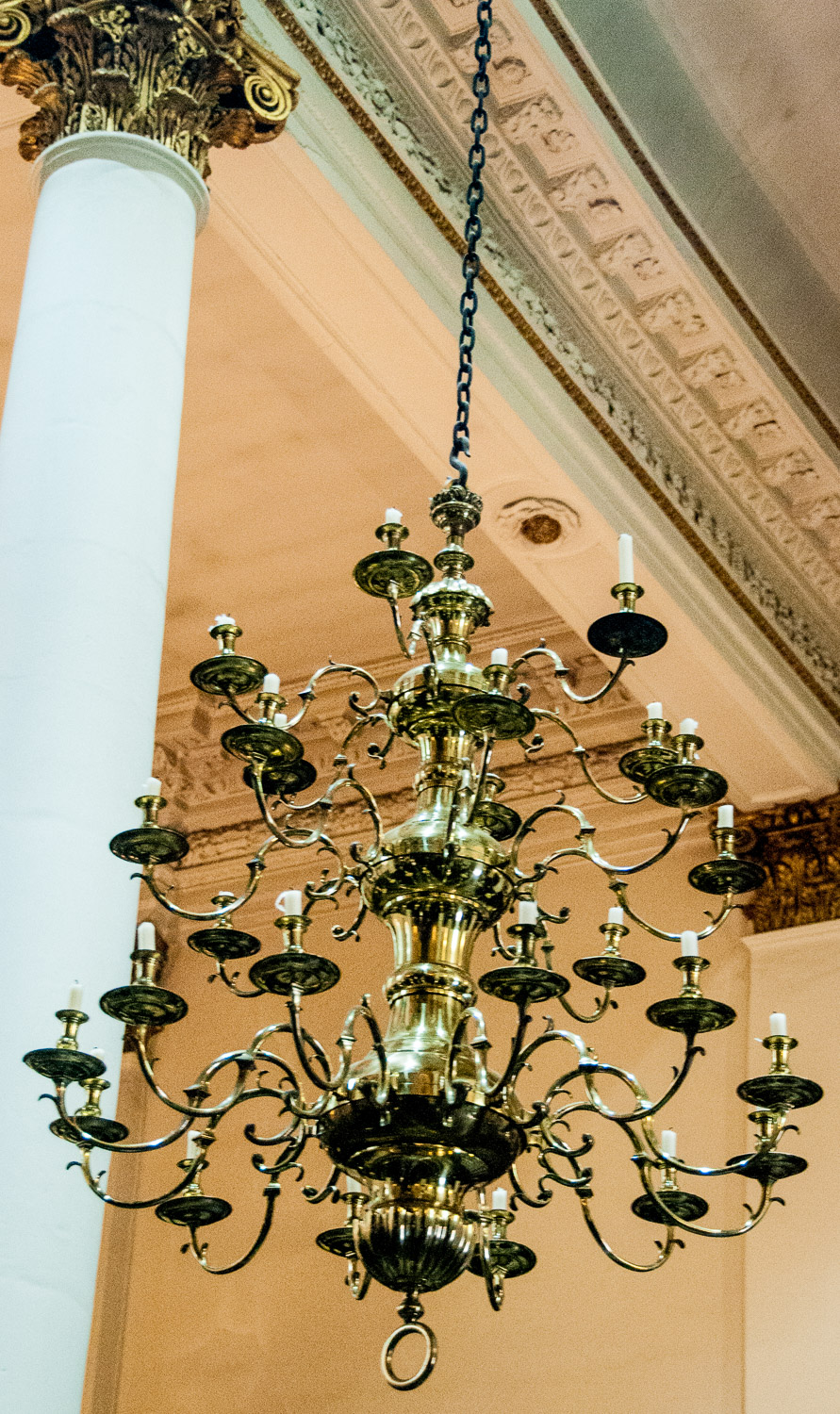
It’s still lit by candles.
As one commentator has noticed, it looks more like something you would find in a country house or a ballroom. The candles were not lit when I visited but I am sure that when they are, on a dark morning or evening, one must get a real feel for what it was like to worship here in earlier centuries. It came to the church via St Vincent’s Cathedral in the West Indies, probably in 1777: a reminder of the links between the City’s trading economy and the British Empire overseas.
And now to the very unusual font …
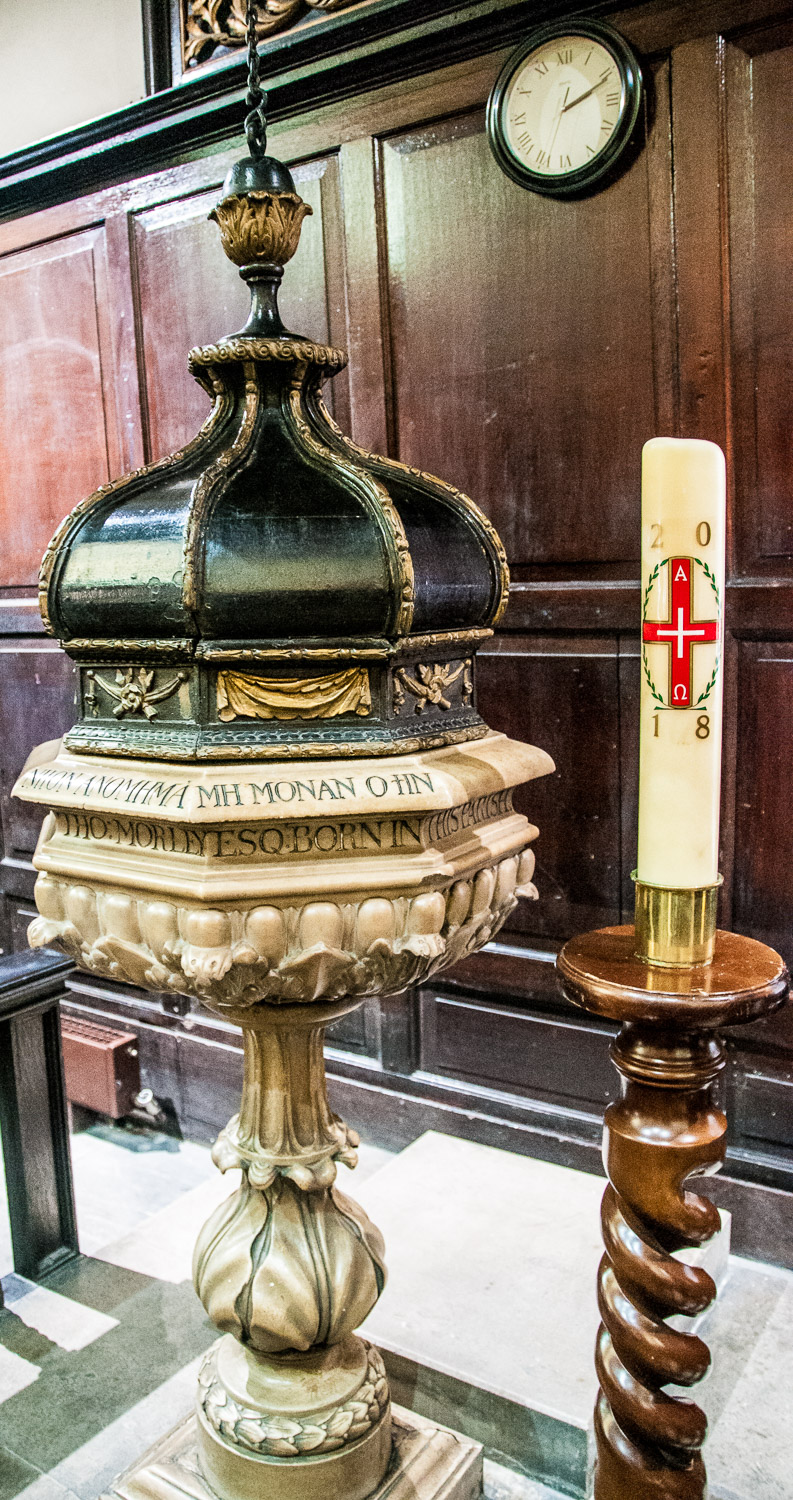
The bowl is white marble and the wooden supporting plinth is painted to look like stone. It dates from 1673, predating the church, and was previously located in a ‘tabernacle’ used by the congregation during the rebuilding.
It contains a Greek palindrome copied from the Cathedral of St Sophia in Constantinople:
Niyon anomhma mh monan oyin
(Cleanse my sin and not my face only)
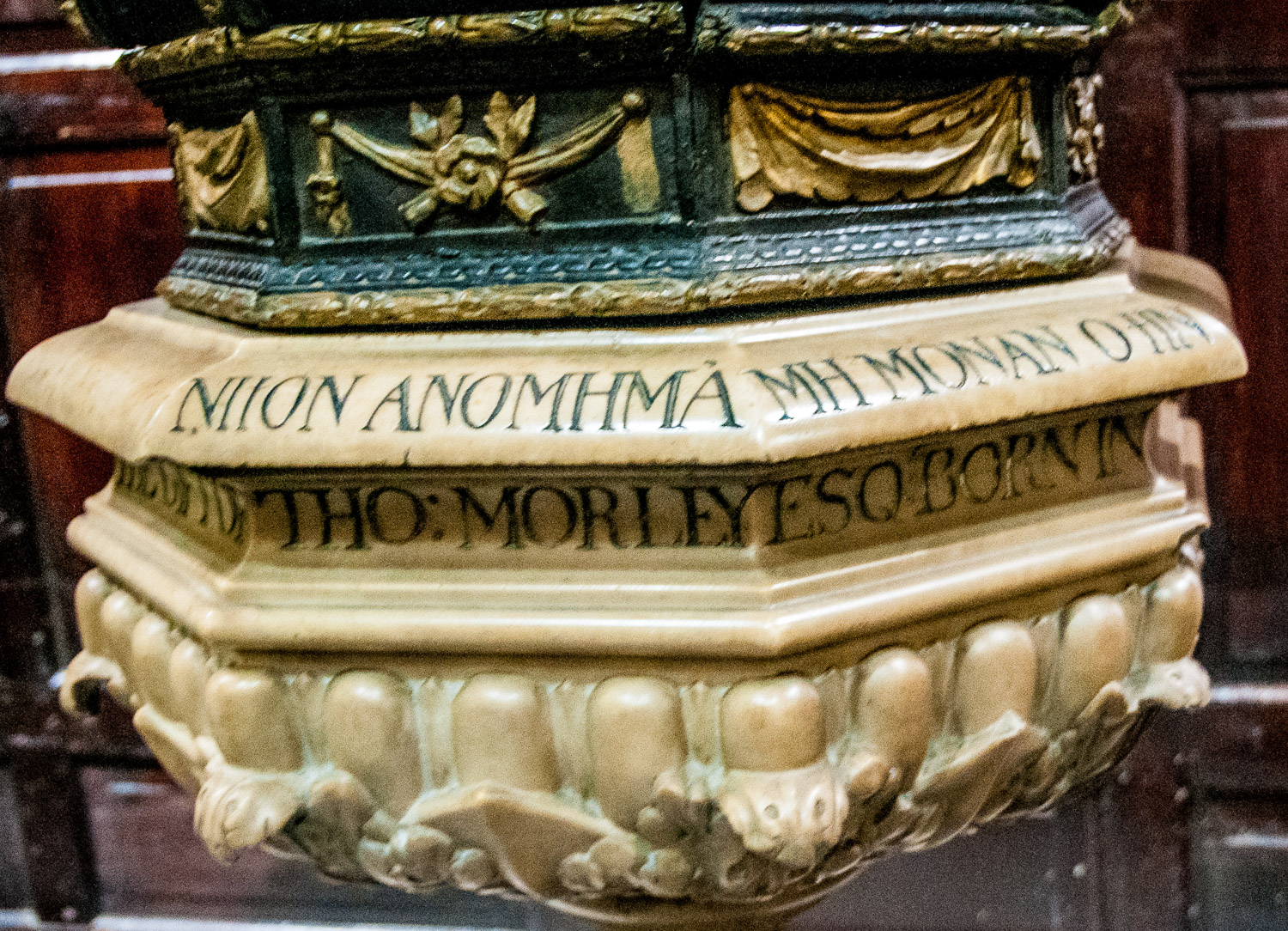
No church blog of mine would be complete if it didn’t contain a reference one of my favourite churches, St Vedast Foster Lane (EC2V 6HH) …
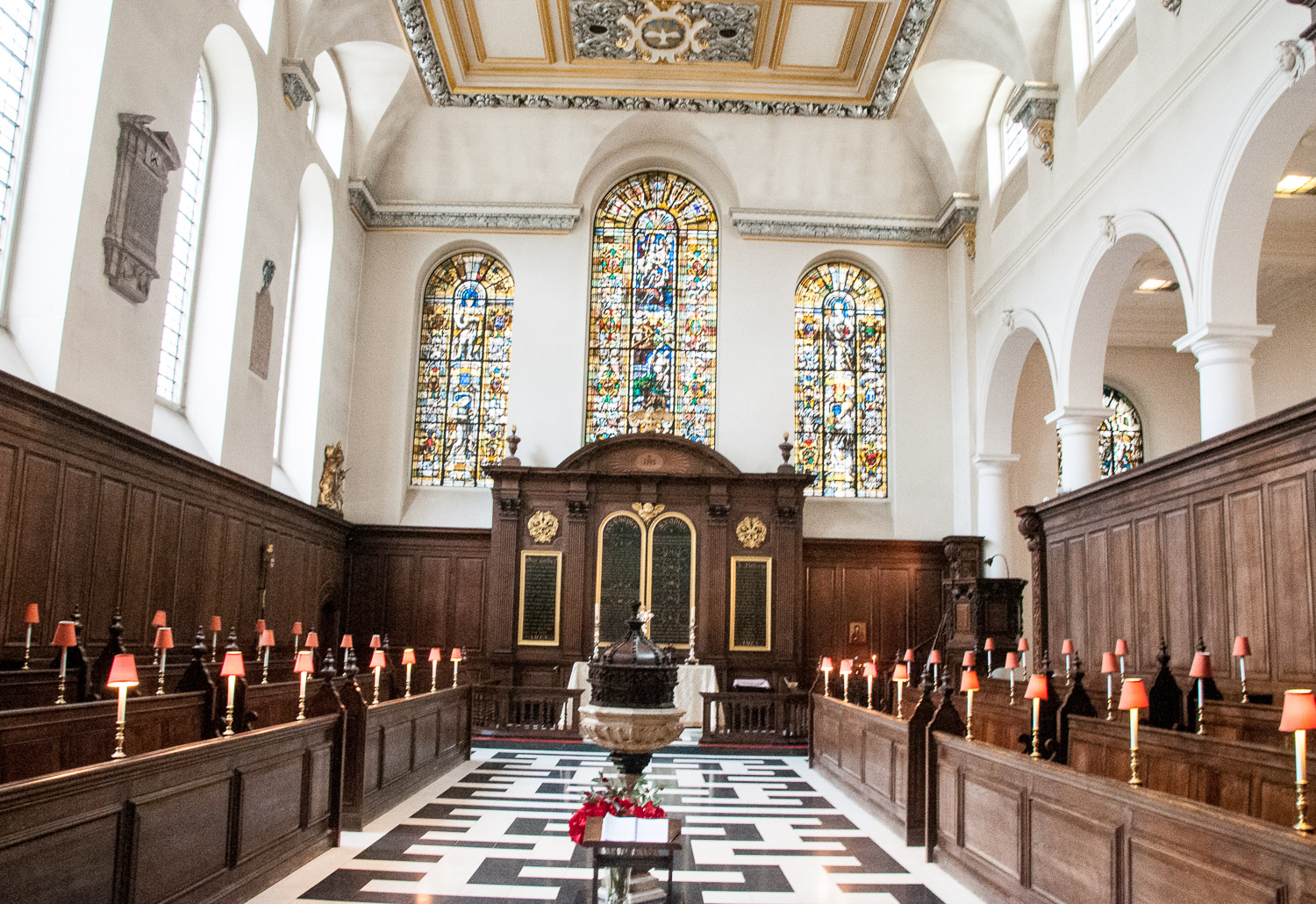
The interior looking east.
Here there are a few features that have come from other churches.
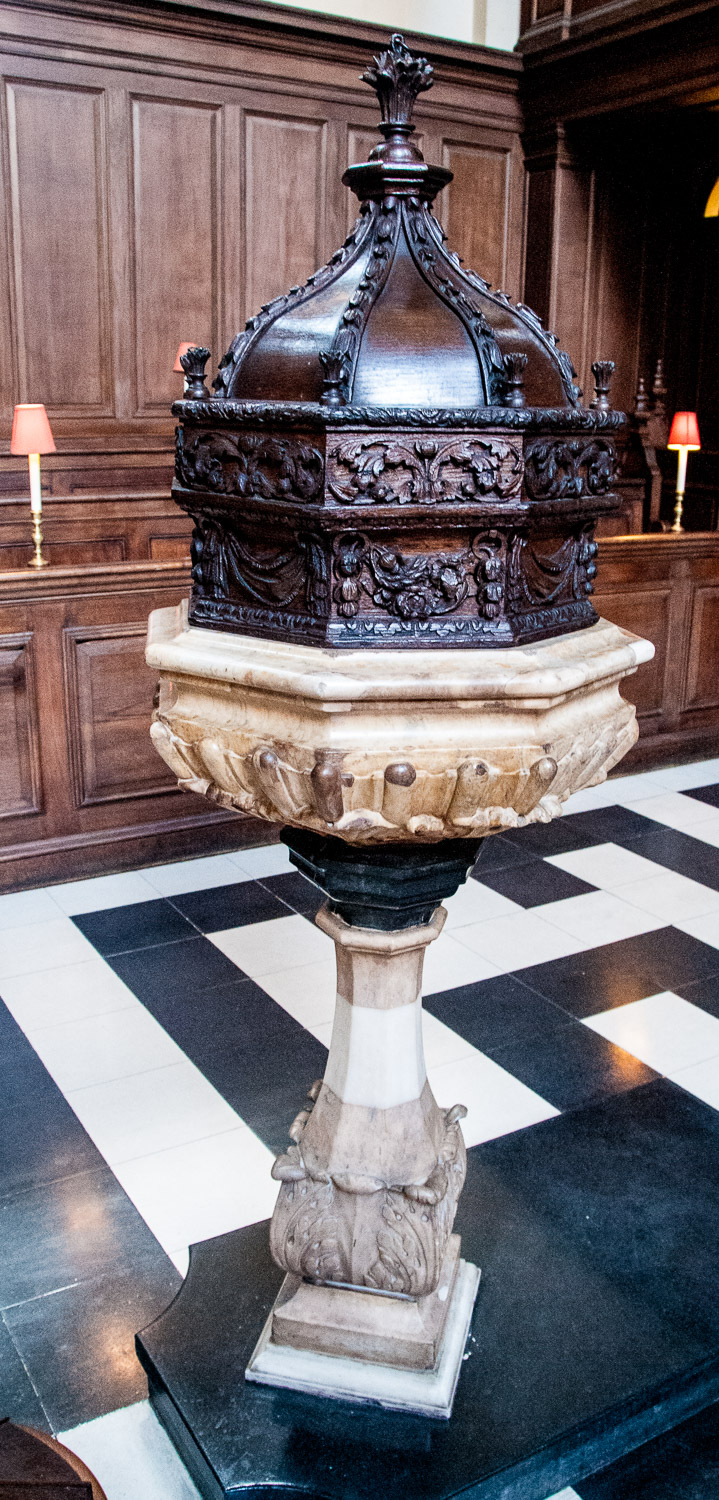
The font and its cover both date from the late 17th century. The font itself was designed by Christopher Wren and the cover is by the most celebrated woodcarver of the 17th century, Grinling Gibbons. Both were rescued from St Anne & St Agnes in Gresham Street after the Blitz.
The reredos behind the altar came from the ‘lost’ church of St Christopher le Stocks …
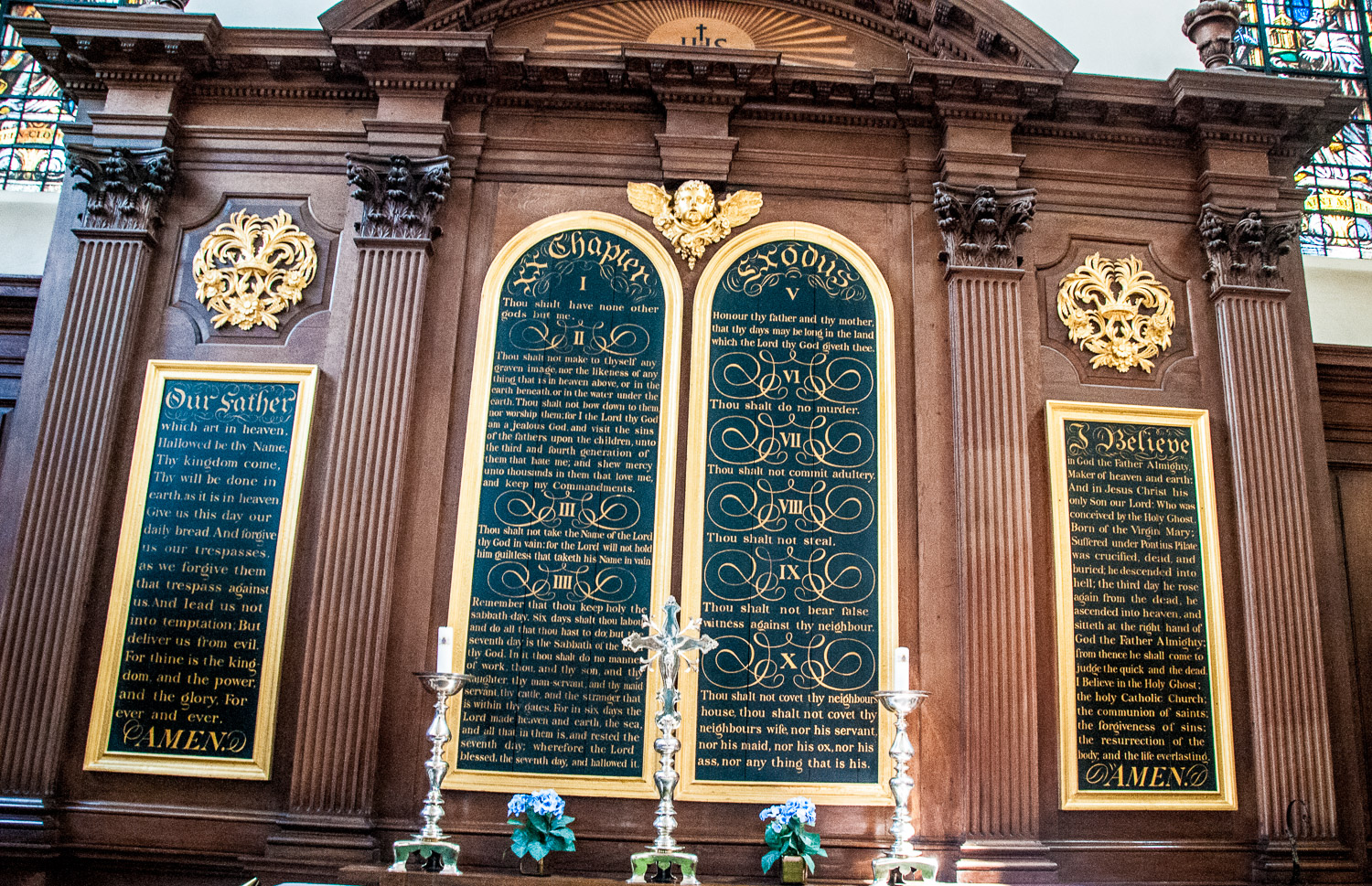
The original St Christopher le Stocks was destroyed in the Great Fire, rebuilt by Wren in 1671 and situated in Threadneedle Street. During the 18th century, the Bank of England gradually bought up adjoining properties, extending its site into the parish. In 1781 it came to an agreement with the rector of St Christopher’s, and its patron, the Bishop of London, allowing it to demolish the church itself. This was not only motivated by a desire to build on the land, but also by a fear that rioters might use the church as a platform to attack the bank, a concern sparked by the Gordon Riots of 1780.
The richly carved pulpit came from All Hallows Bread Street, demolished in 1878 under the Union of Benefices Act 1860 which I also mentioned in last week’s blog …
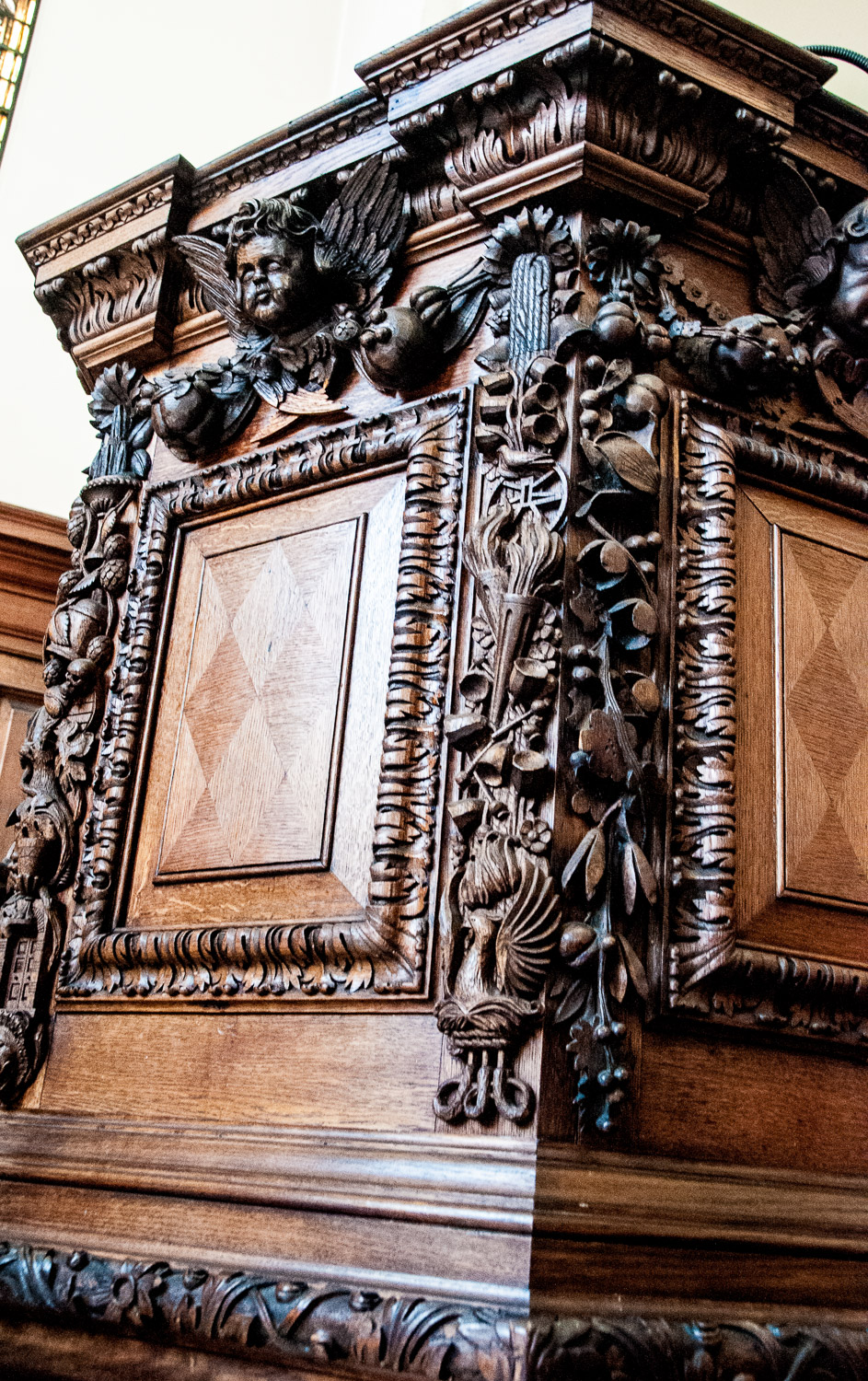
For my last visit of the day I thought I would take a look at St Anne & St Agnes (mentioned above) and see what I could find there (Gresham Street EC2V 7BX).
The Royal Arms of Charles II on the west wall is one of the best examples in England …
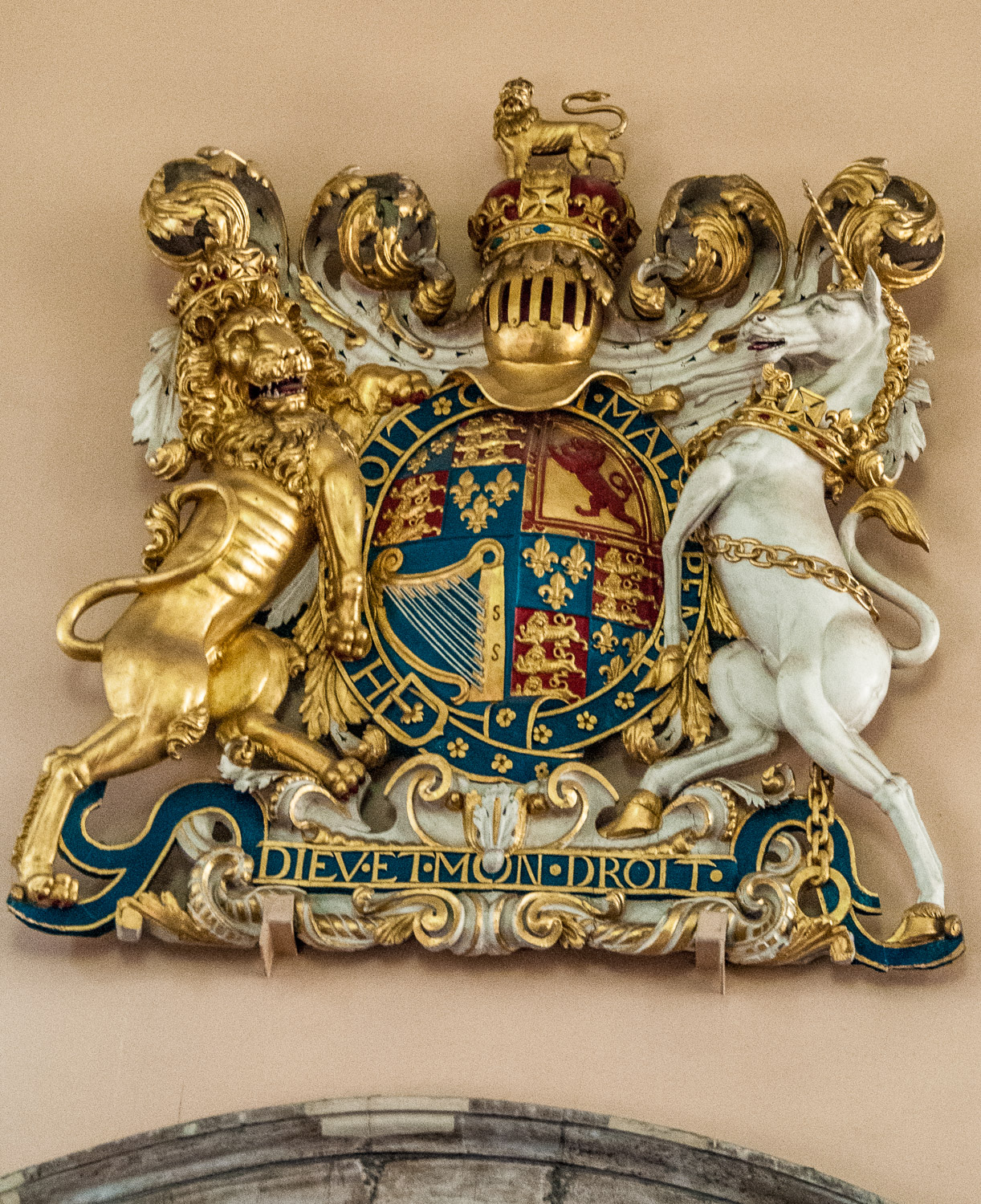
In 1649 the vicar was beheaded for protesting against the execution of King Charles I.
The central dome is supported by four handsome Corinthian columns two of which contain heraldic representations, one being this unicorn …
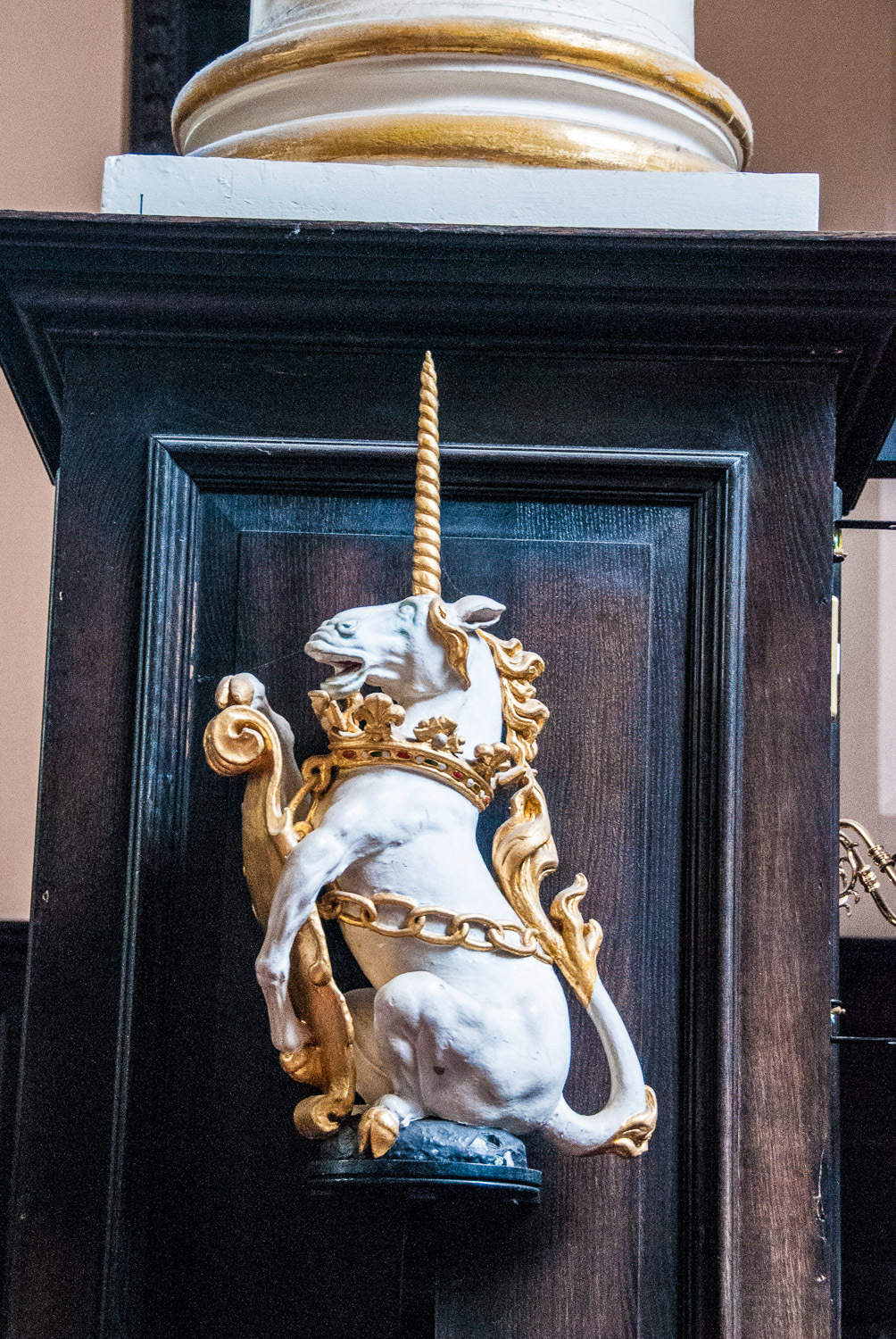
High up on the south wall are busts of Sir James Drax (died 1662) and his son John (died 1682). They come from the ‘lost’ church of St John Zachary which was destroyed in the Great Fire and not rebuilt …
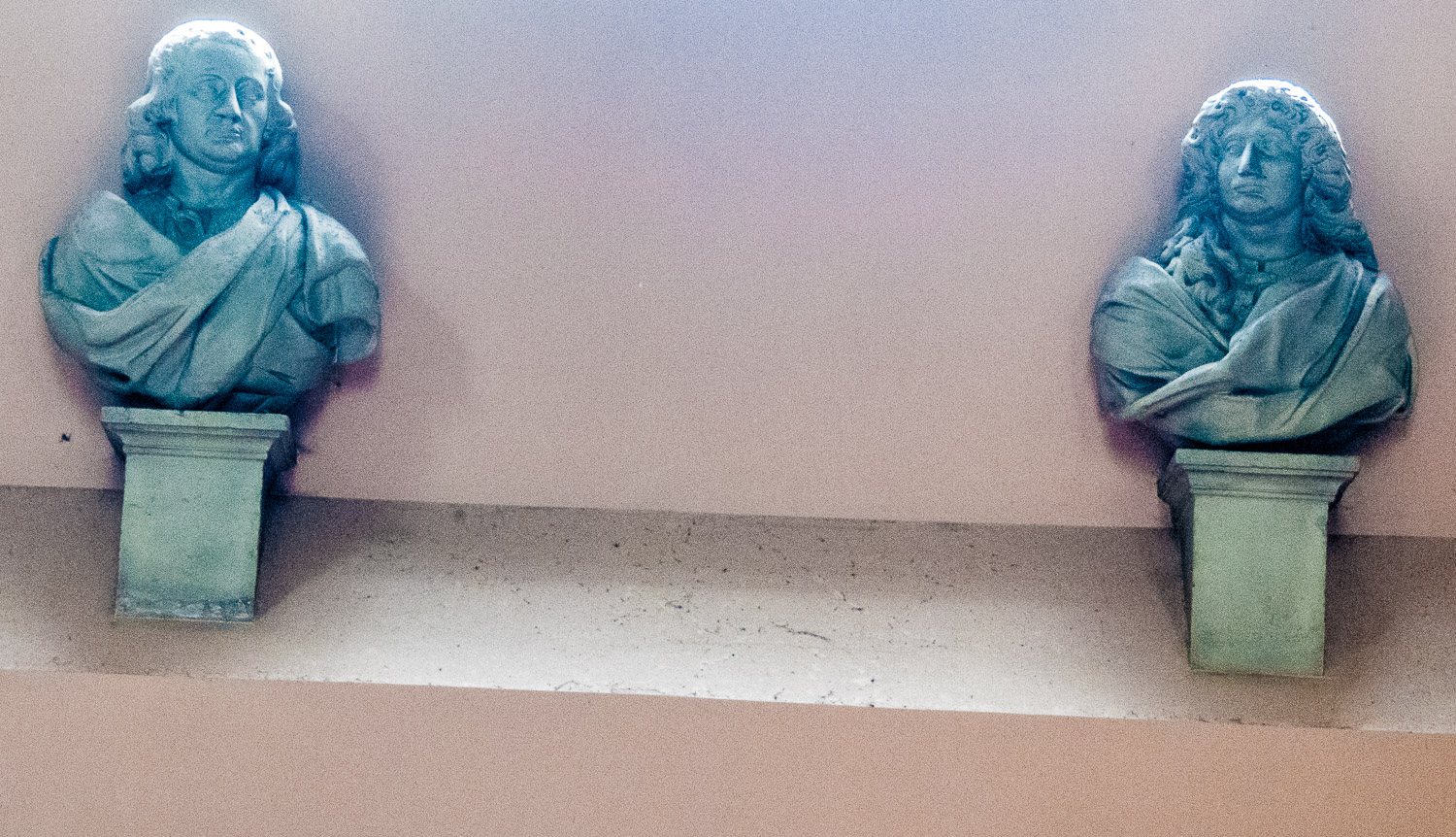
The Drax family were pioneers of the sugar industry (and slavery) in Barbados and apparently Drax Hall Plantation in St George, Barbados is the oldest surviving Jacobean mansion in the western hemisphere.
St John Zachary may be no more but there is now very attractive and quiet garden where the church used to stand …
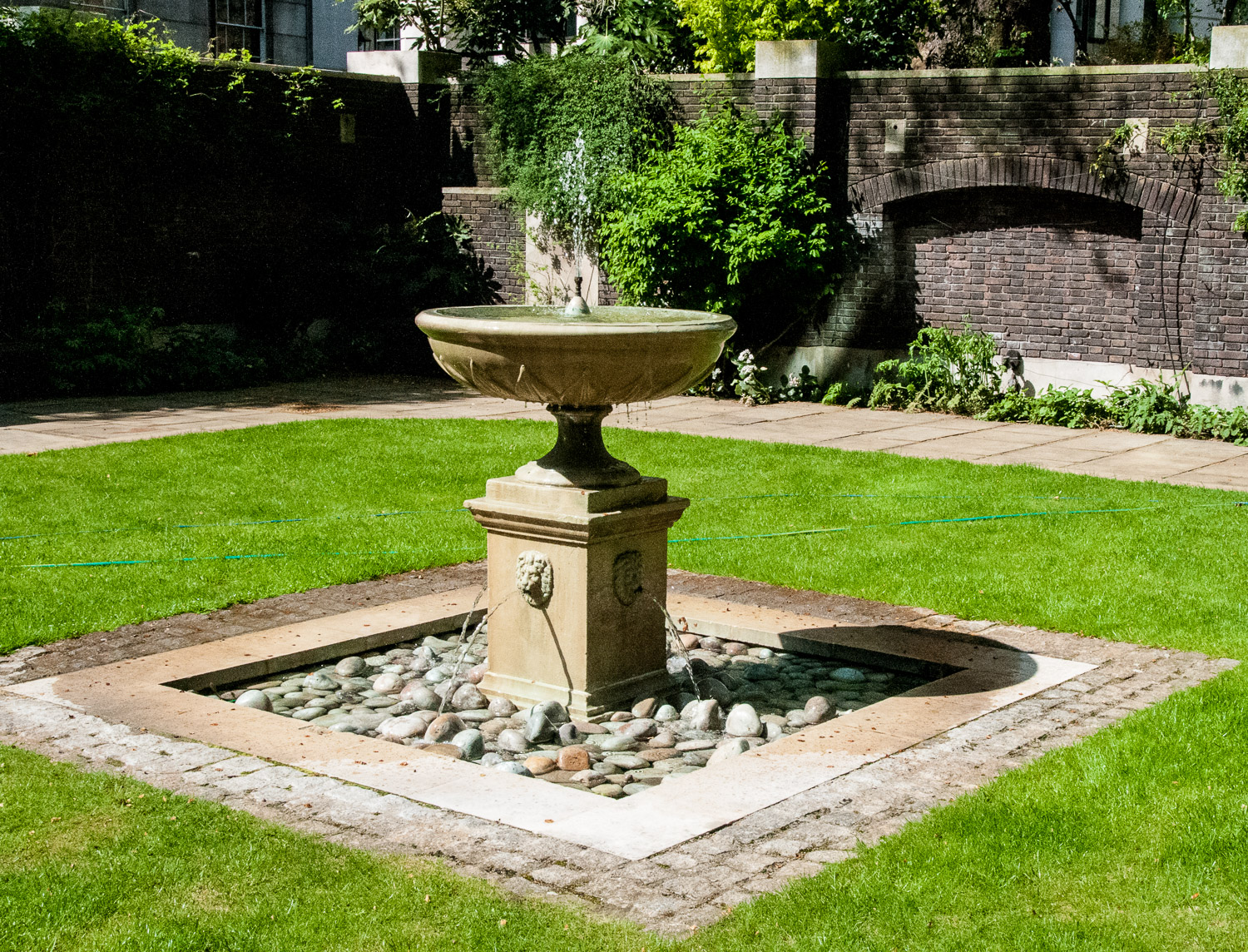
You can read more about it here.
